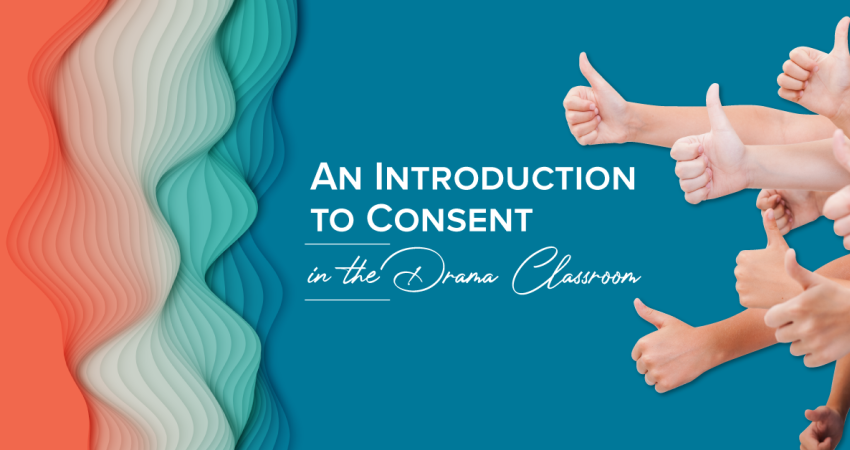Consent can be a touchy subject in the classroom. Many students immediately think that consent refers to intimacy, such as hugs or stage kisses. While this is an important part of theater consent, it encompasses much more than that. Consent in the drama classroom creates a safe and respectful environment and is an important part social and emotional learning. It can be applied to drama class incidents as well as a multitude of real life situations. Here is a brief overview of this vast, evolving and important topic:
1. Explaining Consent to Your Students
Consent simply means permission for something to happen or be done. Consent is specific, informed and flexible, meaning it can change or be withdrawn.
You can introduce the topic of consent by discussing with your students how they would ask a classmate to borrow an article of theirs. They can’t just walk into that student’s backpack and grab the item – they have to ask first and wait for the other student’s answer. If so, great! If not, then this is it. Or, there could be conditions involved. There are many additional things to consider – see the download below for more.
This is a simplified explanation of how consent works. Try having students role-play the interaction above. What are their thoughts afterwards?
2. Limits
What are the physical and mental limits of the students? Are they comfortable with the content of the lesson or the scene you are studying in class? We don’t always know what experiences students have gone through that might make certain content upsetting. For example, a student who has recently had a death in the family may have difficulty studying a play with themes of grief. Or, they might be comfortable reading a scene where a character dies, but they don’t want to play that role on stage.
Boundaries vary from student to student, and often we don’t know what our limits are until they are crossed. At these times, it is important to be flexible and compassionate so students can work through their feelings.
3. Bodily autonomy
Bodily autonomy refers to students’ ability to decide what happens to their bodies without external influences. In drama class, we use our bodies to tell stories. We often engage in hands-on work, using exercises, games and scenes that involve physical touch, such as holding hands. Do students not want others to be near or touch certain parts of their body (or touch them in general)? They may also feel uncomfortable in a particular piece of clothing if it is too short, tight, or revealing. Can you modify exercise actions, stage movements, or clothing to accommodate student boundaries?
4. Power dynamics
Are your students comfortable talking to their peers? Students can say yes to their peers on the outside, but say no on the inside. Can you tell the difference? Also, if a student is in a leadership position (such as assistant director or stage manager), is it easier or more difficult for other students to talk to them?
Also, can your students talk to you? Teachers hold a lot of power, especially if they are also directing the show. Are your students comfortable telling you no and are you comfortable hearing no? What feelings arise when a student says no to you? Are you feeling confident, defensive, proud, irritated, confused, something else?
Give yourself time and grace to reflect on this. As our students learn about consent, boundaries, bodily autonomy, and power dynamics, we teachers learn and destroy our own previous patterns. It’s not uncommon for feelings to arise when working on consent – after all, many of us are also healing from past wounds and traumas. Be gentle with yourself and be proud of the progress you make.
Additional Resources:
Click here for a free printable tip sheet.
Kerry Hishon is a director, actor, writer and stage fighter from London, Ontario, Canada. She blogs at www.kerryhishon.com.
Want to learn more about our newest pieces, resources, and giveaways?
Get on our list!

